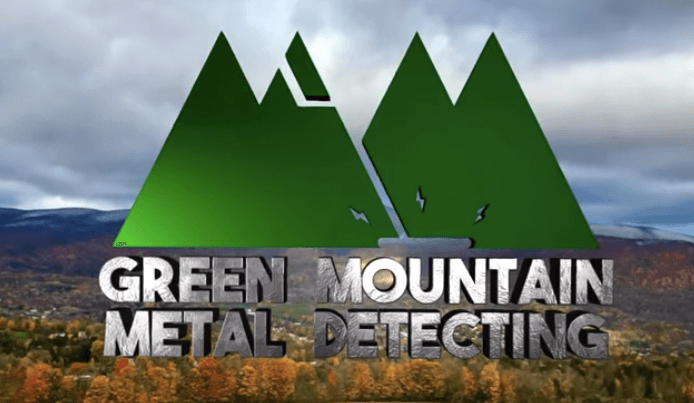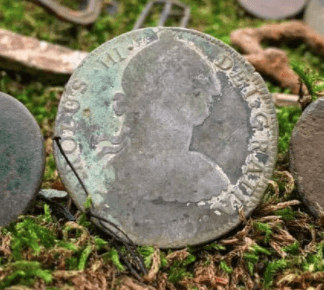Counterfeit Coins
Weapons of War Throughout Time
In the Mountains of Vermont,
Brad Martin finds rare ancient fakes buried in
Colonial Home sites
Long Forgotten…
The Experiences of Green Mountain Detecting
Deep in the woods and high in the mountains of Vermont, detectorist (as well as storytell and naturalist) Brad Martin has found many traces of Colonial activity (and even Civil War remnants) buried in the loamy and undisturbed soil. Since the area has never been sprayed with nitrogen-rich chemical fertilizers, many relics and old coins are recovered with very little corrosion and damage — and some of these coins date back into the mid-to-late 1700s, when pioneers and rugged farming families eked out a living on the rocky land and evidence of old wagon roads still lace the hillsides.
Over the years that Brad and fellow hunters (such as Mike St. Pierre and Eddie
Pascucci) have traipsed into the unspoiled wilderness, they have located old homesites that are only marked by cellar holes (depressions and stacked stone) and the occasional stone fences that once marked grazing pastures. Brad carefully records his experiences and observations as he travels and often-times as he digs promising signals – and he shares these outings and discoveries on his Green Mountain Metal Detecting (GMMD) YouTube Channel.
A Gigantic Silver Coin –
A “Bucket-Lister” –
However . . .
One extraordinary find that Brad made recently was an eye-popping Eight-Reale silver coin, minted in the “New World” for the Spanish Empire – dating from the late 1700s. As Brad lifted it from the earth, he saw it was a hefty Silver Dollar-sized coin. It caused his metal detector to give out a tremendous high-pitched response — signaling something likely made up of precious metal, as a large silver disk would do. But this was improbable — there was no hint of commercial activity having been anywhere nearby — and Eight Reales was a lot of money to lose in 1800!!
(Brad knew before he dug down that it was unlikely that it was any recent trash, because of how remote the spot being detected was . . . all of the finds he made that day were well over 100 years old . . . it had been at least a century since the area was inhabited.)
But this coin — when gently cleansed — showed what appeared to be a silver wash that was wearing away from a more base-like (darker colored) metal. Brad quickly realized that this a COUNTERFEIT coin — one that had been minted and dropped long before the Civil War.
One article we researched asserted that England produced thousands of fake reales and flooded the Spanish Empire with those coins in order to create inflation — if so, then that is the same tactic that was used by the Union when millions of dollars in Confederate paper money was produced by Samuel Upton in Philadelphia (and others) to help fuel inflation in Dixie. It worked. Inflation has been effectively used to defeat the enemy in the field, by making it impossible to afford to feed and supply an army and starving the civilian population.


